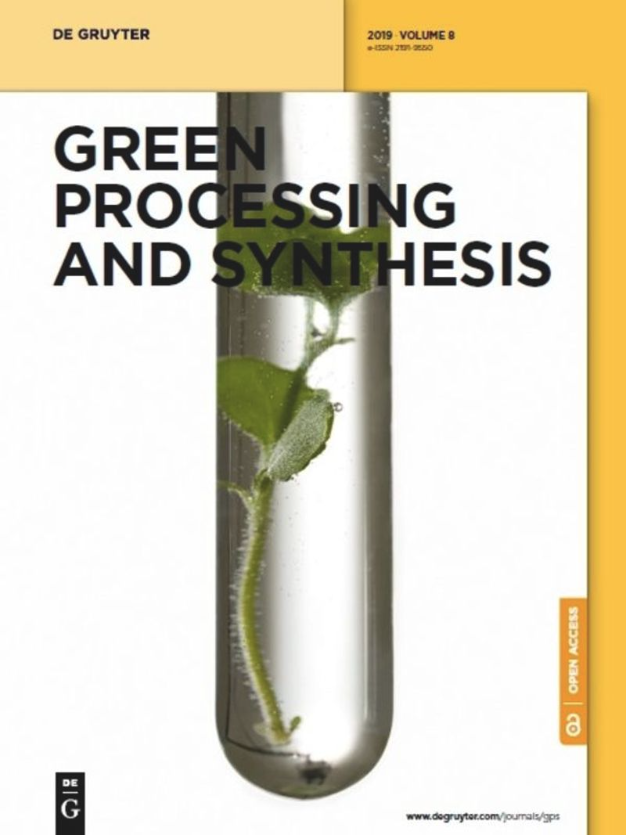Optimization of apigenin nanoparticles prepared by planetary ball milling: In vitro and in vivo studies
IF 3
4区 工程技术
Q2 CHEMISTRY, MULTIDISCIPLINARY
引用次数: 0
Abstract
Abstract This study intended to optimize apigenin (APG) nanoparticle formulation prepared by planetary ball milling to enhance its dissolution rate and bioavailability using a design of experiment (DoE). In this study, polyvinyl pyrrolidone (PVP K30) was used as a nanoparticle stabilizer. The independent parameters of milling speed, milling ball size, and drug to solvent ratio were evaluated for their impacts on APG nanoparticles concerning the nanoparticle size (Y1), zeta potential (Y2), and drug dissolution efficiency after 60 min, notated as % DE60 (Y3). The milling ball size showed a significant antagonistic effect (P = 0.0210) on the size of APG nanoparticles, while milling speed had an agonistic effect on the zeta potential values of drug nanoparticles, ranging from low to medium speed levels. In addition, ANOVA analysis indicated that the effect of the drug-to-solvent ratio on the % DE60 of APG from the nanoparticle formulations was antagonistically significant (P = 0.015), and the quadratic effect of milling speed (AA) also had a significant antagonistic effect (P = 0.025) on the % DE60. Risk assessment analytical tools revealed that milling ball size and milling speed significantly affect the nanoparticle size. The drug/solvent ratio exerted a strong impact on % DE60. Furthermore, the maximum plasma concentration (C max) of the optimized APG nanoparticle formula increased by four folds. In addition, AUC0–t (ng·mL−1·h−1) for APG nanoparticle (353.7 ± 185.3 ng·mL−1·h−1) was higher than that noticed in the case of the untreated drug (149 ± 137.5 ng·mL−1·h−1) by more than two folds.行星球磨法制备芹菜素纳米颗粒的优化:体外和体内研究
摘要采用实验设计(DoE)对行星球磨法制备的芹菜素(apigenin, APG)纳米颗粒配方进行优化,以提高其溶出度和生物利用度。在本研究中,聚乙烯吡咯烷酮(PVP K30)作为纳米颗粒稳定剂。考察碾磨速度、碾磨球尺寸和药溶剂比等独立参数对APG纳米颗粒粒径(Y1)、zeta电位(Y2)和60 min后药物溶出效率(% DE60 (Y3))的影响。磨球大小对APG纳米颗粒的大小具有显著的拮抗作用(P = 0.0210),而磨球速度对药物纳米颗粒的zeta电位值具有拮抗作用,其范围在中低速水平。此外,方差分析表明,药溶剂比对纳米颗粒制剂中APG % DE60的影响具有显著的拮抗作用(P = 0.015),研磨速度(AA)的二次效应对% DE60也具有显著的拮抗作用(P = 0.025)。风险评估分析工具显示,磨球尺寸和磨球速度显著影响纳米颗粒的大小。药物/溶剂比对% DE60有较大影响。此外,优化后的APG纳米颗粒的最大血浆浓度(cmax)提高了4倍。此外,APG纳米颗粒的AUC0-t (ng·mL−1·h−1)(353.7±185.3 ng·mL−1·h−1)比未处理药物(149±137.5 ng·mL−1·h−1)高2倍以上。
本文章由计算机程序翻译,如有差异,请以英文原文为准。
求助全文
约1分钟内获得全文
求助全文
来源期刊

Green Processing and Synthesis
CHEMISTRY, MULTIDISCIPLINARY-ENGINEERING, CHEMICAL
CiteScore
6.70
自引率
9.30%
发文量
78
审稿时长
7 weeks
期刊介绍:
Green Processing and Synthesis is a bimonthly, peer-reviewed journal that provides up-to-date research both on fundamental as well as applied aspects of innovative green process development and chemical synthesis, giving an appropriate share to industrial views. The contributions are cutting edge, high-impact, authoritative, and provide both pros and cons of potential technologies. Green Processing and Synthesis provides a platform for scientists and engineers, especially chemists and chemical engineers, but is also open for interdisciplinary research from other areas such as physics, materials science, or catalysis.
 求助内容:
求助内容: 应助结果提醒方式:
应助结果提醒方式:


